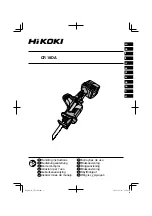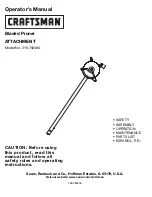
9.
Operation & Bandsawing Practice
- cont.
9.5 Blade selection (TPI cont.)
Having selected an appropriate blade
for the particular thickness and type of
material to be sawn, it is essential that
the saw blade is allowed to cut freely by
not applying too much pressure.
• The need for excessive pressure is
likely to be a result of the incorrect blade
selection or a worn blade and will result
in inaccurate cutting and possibly blade
breakage.
9.5 Blade selection (width)
• When cutting shapes, the width of the
blade limits the minimum radius that can
be cut.
• If the blade is too wide for the cutting
radius the blade will twist and possibly
jam or break.
• The smaller the radius the narrower
the blade has to be.
Fig.9.2
provides
guidance on the minimum radius to be
cut with the most commonly used blade
widths.
Fig 9.2
To scale
9.6 Blade selection summary
To see how TPI and width of the blade
come together, see
Fig.9.3.
• Regularly examine the blade for
excessive damage or cracking as a result
of fatigue. If such damage is present
replace the blade.
• It is important to use a sharp blade.
Dull teeth result in increased feed
pressure producing a poor quality finish
and an inaccurate cut.
Please note as well as the blades listed,
we can also supply bansdaw blades
to almost any specification please call
Record Power Customer Services on
0870 770 1777 for further details.
Fig 9.3
Summary of Contents for BS300
Page 29: ...12 Parts Diagrams ...
Page 30: ...12 Parts Diagrams cont 30 31 ...
Page 31: ...12 Parts Diagrams cont ...















































